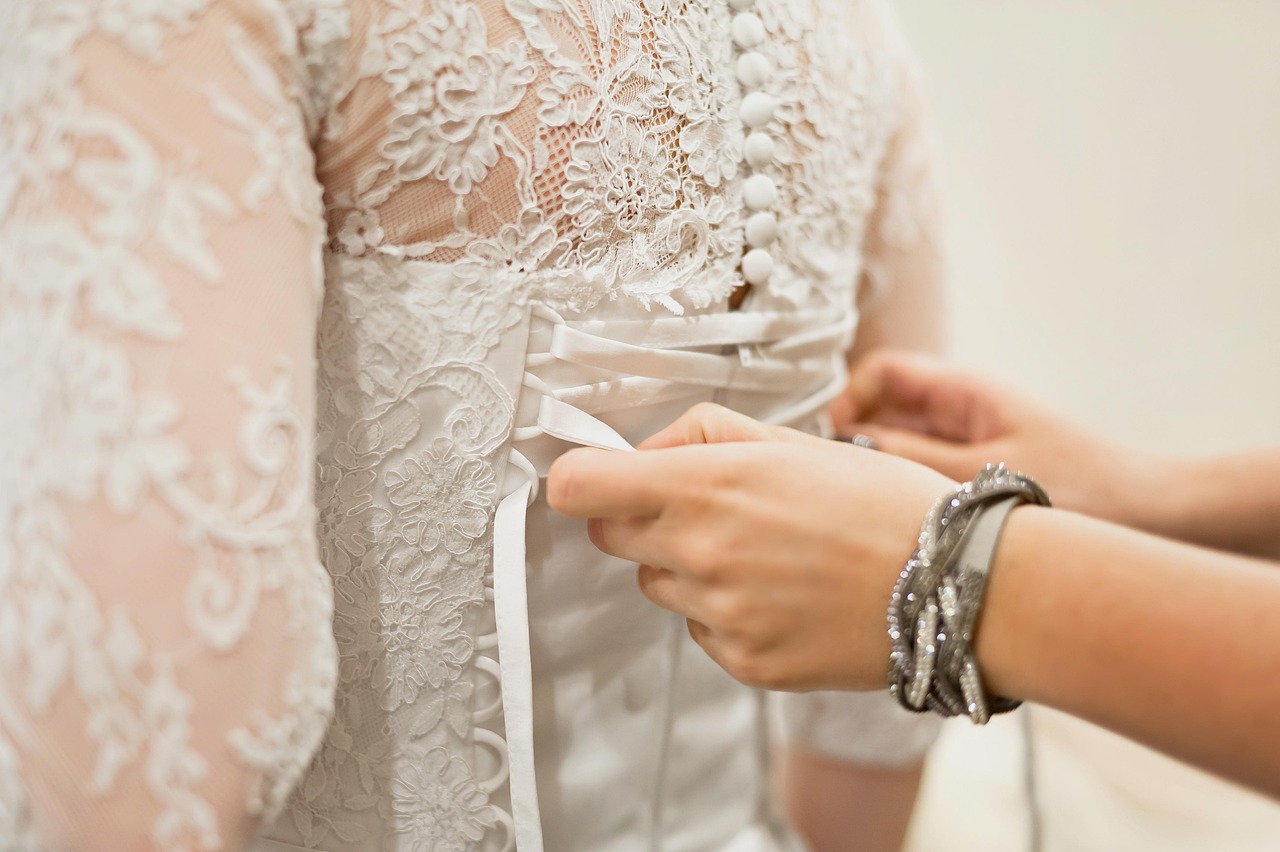Read tips for selecting unique wedding dress styles
Choosing a wedding dress is one of the most memorable parts of planning your big day. While traditional white gowns remain timeless, many modern brides are seeking distinctive styles that reflect their personality and vision. From unconventional colors to innovative fabrics and personalized design elements, the world of bridal fashion offers endless possibilities for creating a look that feels authentically yours.

Discover diverse colors and materials
The notion that wedding dresses must be white or ivory is rapidly evolving. Contemporary brides are embracing a spectrum of hues, from soft blush and champagne tones to bold jewel colors like emerald, sapphire, and even black. Colored wedding dresses allow you to express your personality while creating a memorable visual impact. When considering color, think about your skin tone, wedding theme, and the season of your celebration.
Material selection plays an equally important role in defining your dress’s character. Beyond traditional satin and lace, consider luxurious velvet for winter weddings, flowing chiffon for beach ceremonies, or structured mikado silk for a modern aesthetic. Textured fabrics like organza, tulle with embroidered details, or even sustainable materials like organic cotton and bamboo silk offer unique visual and tactile experiences. Mixing materials within a single dress can create dimensional interest and highlight specific design features.
Uncover unique design inspirations
Finding inspiration for your unique wedding dress can come from unexpected sources. Look beyond bridal magazines to fashion runways, vintage photographs, cultural heritage, art movements, or even architecture. Perhaps a favorite painting’s color palette speaks to you, or the flowing lines of Art Nouveau architecture inspire your silhouette choice. Historical eras like the roaring twenties, elegant fifties, or bohemian seventies offer distinct style elements that can be modernized for contemporary wear.
Consider incorporating meaningful details that tell your story. This might include embroidery featuring significant dates or initials, fabric from a family heirloom, or design elements that honor your cultural background. Collaborate with designers who understand your vision and can translate abstract concepts into wearable art. Bring mood boards, fabric swatches, and reference images to consultations to communicate your aesthetic clearly.
Embrace individuality in your wedding attire
Your wedding dress should feel like an authentic extension of who you are rather than a costume you’re wearing for the day. If you typically favor minimalist aesthetics, a clean-lined slip dress or modern jumpsuit might resonate more than a heavily adorned ball gown. Conversely, if you love drama and romance, don’t shy away from voluminous skirts, elaborate trains, or intricate beadwork.
Personalization extends beyond the dress itself to accessories and styling choices. Consider non-traditional veils, statement jewelry, colored shoes, leather jackets for edgier looks, or even comfortable sneakers if that reflects your personality. Some brides choose to wear two different looks throughout their wedding day, starting with a formal ceremony gown and changing into something more relaxed for the reception. This approach allows you to honor tradition while also expressing your contemporary style.
Find styles that match your theme
Your wedding dress should harmonize with your overall celebration aesthetic. A rustic barn wedding might call for bohemian lace, flowing sleeves, and natural fabrics, while a formal ballroom affair could warrant structured silhouettes and luxurious embellishments. Beach weddings often pair beautifully with lightweight, flowing fabrics that move gracefully in coastal breezes, while garden ceremonies complement floral appliqués and romantic, nature-inspired details.
Consider the venue architecture and setting when selecting your dress style. A historic mansion might inspire vintage-influenced designs, while a modern art gallery could call for sleek, architectural silhouettes. The season also influences appropriate style choices. Summer weddings benefit from breathable fabrics and lighter constructions, while winter celebrations allow for richer materials, long sleeves, and dramatic capes or wraps.
Explore beyond traditional wedding dresses
Breaking from convention doesn’t mean sacrificing elegance or significance. Many brides are choosing bridal separates, combining custom tops with skirts or pants for versatile, personalized looks. Jumpsuits and pantsuits have gained popularity, offering sophisticated alternatives that provide comfort and ease of movement. These options work particularly well for intimate ceremonies, courthouse weddings, or second marriages.
Short wedding dresses, midi-length styles, and high-low hemlines offer playful alternatives to floor-length gowns. These styles showcase beautiful shoes, allow for easier movement, and can feel more appropriate for casual or outdoor settings. Colored accents, unexpected cutouts, illusion panels, and asymmetrical designs add contemporary edge while maintaining bridal elegance. Remember that your wedding attire should make you feel confident, comfortable, and beautiful throughout your celebration.
Conclusion
Selecting a unique wedding dress is an opportunity to celebrate your individuality while honoring the significance of your special day. By exploring diverse colors and materials, drawing inspiration from various sources, and choosing styles that align with your personality and wedding theme, you can create a bridal look that feels authentically yours. Whether you opt for subtle personalization within traditional frameworks or boldly venture into unconventional territory, the most important consideration is that your dress makes you feel like the best version of yourself. Trust your instincts, work with professionals who understand your vision, and embrace the creative process of bringing your dream wedding attire to life.


